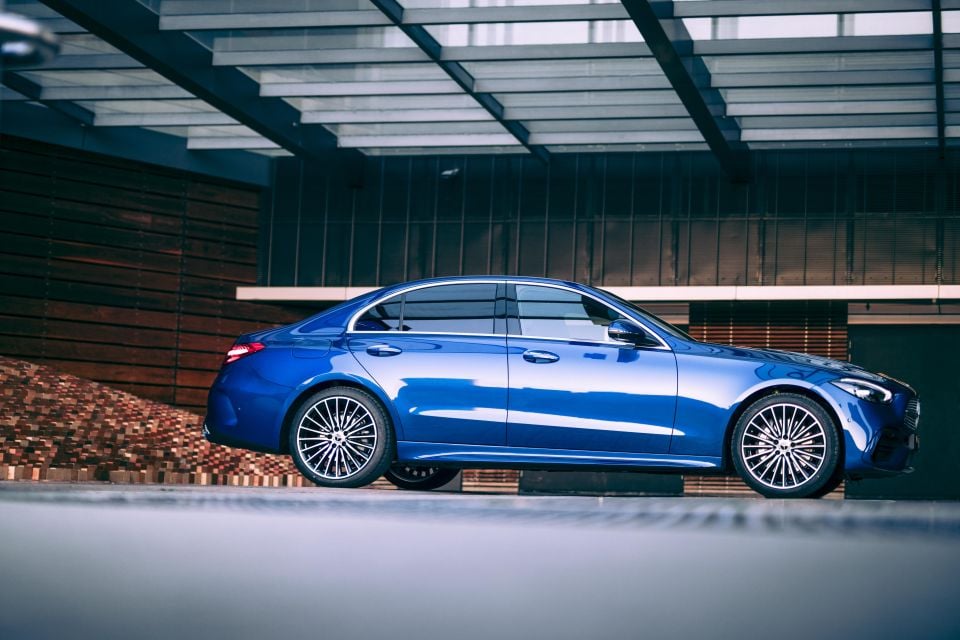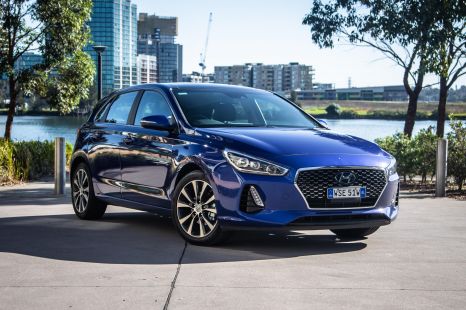

Alborz Fallah
2025 Lamborghini Revuelto review
2 Months Ago
Mercedes-Benz Australia has temporarily removed rear-axle steering from the redesigned C-Class sedan's options list due to the chip shortage.

Contributor


Contributor
The redesigned Mercedes-Benz C-Class sedan will temporarily miss out on its optional rear-axle steering feature, another victim of the global semiconductor shortage.
UPDATE, 22/02/2022 – Mercedes-Benz Australia has said the entire Engineering Package is unavailable for now on new C-Class builds. This also includes adaptive suspension.
UPDATE, 21/02/2022 5:40pm – Mercedes-Benz Australia has clarified that rear-axle steering is only available on already built C-Class vehicles, and not available to order on new builds.
Late last week, a CarExpert reader reached out after ordering a new C300 through the Mercedes-Benz Australia website and discovering they couldn’t add the feature.
A Mercedes-Benz Australia spokesperson confirmed that new C-Class builds currently can’t be specified with the feature due to semiconductor shortages.
They indicated this’ll only be temporary, as Mercedes-Benz intends to make the optional feature available again “as soon as possible”.

This rear-axle steering feature is usually part of the $3400 Engineering Package which also includes adaptive suspension. For now, this entire option package is unavailable to new C-Class builds.
According to the Mercedes-Benz Australia spokesperson, rear-axle steering can’t be retrofitted to existing new-generation C-Class vehicles.
Potential owners can choose to hold off on ordering a new C-Class in the hopes of rear-axle steering becoming available again, but at this stage there’s no clear timeline of when it’ll return.

The Mercedes-Benz Australia spokesperson said there are a number of new C-Class vehicles already in Australia for the press launch with rear-axle steering fitted, as well as a few cars with the optional feature fitted that are available to purchase through the website.
Rear-axle steering is a system that allows the rear wheels of a car to turn in the opposite direction as the front wheels for increased manoeuvrability at low speeds, and also turn the same direction as the front wheels at higher speeds for increased stability.
Pricing for the 2022 Mercedes-Benz C-Class range hasn’t changed because rear-axle steering is an optional feature.
The C200 is priced at $78,900 before on-road costs, while the C300 is $90,400 before on-roads.

These prices are non-negotiable, per Mercedes-Benz’s switch to an agency distribution model on January 1, 2022.
Mercedes-Benz isn’t alone in removing certain features due to the semiconductor shortage, which many other automakers doing the same so they can produce and deliver cars quicker.
Skoda recently removed certain driver assist equipment and luxury features from its Kodiaq SUV and is offering at least $1100 as compensation. These features were standard on the top-of-the-range RS and part of option packages on the Style and Sportline trims.
Volkswagen recently removed the Golf R‘s and Tiguan R‘s Harman Kardon sound system and cut the price of affected vehicles by $1000, shifting the upgrade to its options list.

Peugeot also recently removed the side thorax airbags from its entry-level Expert mid-sized van for the MY22 model year, also due to semiconductor shortages. Adaptive cruise control was also deleted, but prices were increased.
This new-generation C-Class is considerably more expensive than its predecessor but is larger and packs more equipment.
The base car climbs a significant $12,000 over the old one, but Mercedes counters by claiming it has about $10,000 worth of extra equipment.
The current top-of-the-range C300 is $15,100 more expensive than the outgoing model.

The two C-Class variants initially available are both powered by turbocharged four-cylinder petrol engines with 48V mild-hybrid systems.
This new-generation C-Class was first revealed in February 2021, but Mercedes-Benz announced in December 2021 it was delaying the local launch.
The delay was to ensure adequate supply of the new car, though buyers could still find themselves on a wait list for the new sedan.
Where expert car reviews meet expert car buying – CarExpert gives you trusted advice, personalised service and real savings on your next new car.
Jack Quick is an automotive journalist based in Melbourne. Jack studied journalism and photography at Deakin University in Burwood, and previously represented the university in dance nationally. In his spare time, he loves to pump Charli XCX and play a bit of Grand Theft Auto. He’s also the proud owner of a blue, manual 2020 Suzuki Jimny.


Alborz Fallah
2 Months Ago


James Wong
2 Months Ago


James Wong
1 Month Ago


Paul Maric
27 Days Ago


Matt Campbell
17 Days Ago


William Stopford
8 Days Ago